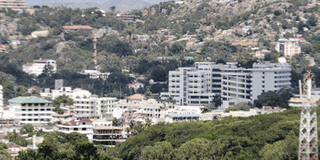Big revenue after Mwanza abattoir upgrade

What you need to know:
- The upgrading exercise seeks to create more space that will result into an increase in the number of animals to be slaughtered at the place and raise revenue by over 2000 per cent, according to environmental officer at Mwanza City, Ms Lydia Nyemo.
The Mwanza City Council is upgrading its Nyakato abattoir with a view to producing electricity by using wastes from slaughtered animals in a bid to address power problems and raise its revenues, The Citizen has learnt.
The upgrading exercise seeks to create more space that will result into an increase in the number of animals to be slaughtered at the place and raise revenue by over 2000 per cent, according to environmental officer at Mwanza City, Ms Lydia Nyemo.
“Currently, we earn Sh216 million from slaughtering services but upon completion of the upgrade, the number of slaughtered animals will increase and we are set to extend our market base internationally and thus be able to rake in Sh5 billion worth of revenues,” she told The Citizen.
The City Council’s livestock officer, Mr Onesmo Wilson said that currently, at least 80 goats and 200 cows are slaughtered daily but upon completion of the upgrading exercise, the number is set to increase to 700 cows, 450 goats and sheep under the upgraded abattoir. He says that the current slaughtering fee for Sh2,000 for every cow and Sh1, 500 for goats and sheep. With the ongoing upgrade, the fee for slaughtering a cow will rise to at least Sh10, 000.
The mechanical engineer for the city’s biogas project, Mr Christopher Simwiita told The Citizen that animal waste materials including animal dung, blood, hooves, skin and bones will also be converted to biogas through Effluent Treatment Integrated with Biodigester in the artificial wetland biogas project.
Nyakato abattoir began its operations in 1984. The animal wastes were earlier drained into the Lake Victoria thus polluting the water environment.
An environmental officer at Mwanza City, Ms Lydia Nyemo told The Citizen that the Sh2.9 billion biogas plant which commenced last year (2016) will produce 315 cubic meters of biogas every day.
The biogas will be produced scientifically though the use of treated water that will be obtained from animal waste.
The move coincides with the upgrading of the current abattoir in a bid to improve slaughtering services for more revenue collections.
However, she noted that the upgrading of slaughtering services will increase the current annual revenue from 216 million to 5 billion.




